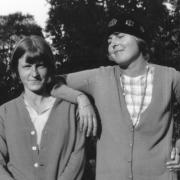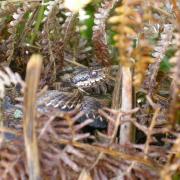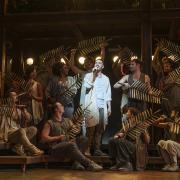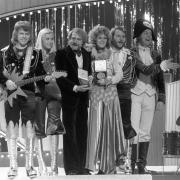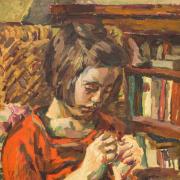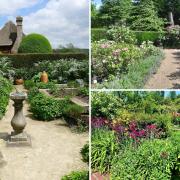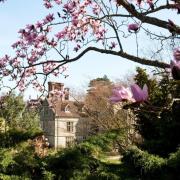For those not familiar with the art of letter cutting, it is a form of inscriptional architectural lettering related to stone carving and monumental masonry.

While traditional stone cutting focuses on images and symbols, in letter cutting it is the calligraphy that draws the eye.
Julie Rezac makes garden ornaments, memorial plaques, public artwork and gravestones in Balcombe. She says that the British tradition for letter cutting is “unequaled in the world.” She is American but lived in the Netherlands for 10 years before moving to the UK.
Having formulated her designs, Julie draws directly on to the stone with a pencil before carving in to it with a chisel and hammer. She first came across the art of letter cutting while in Ireland. “Every memorial there was a lively original and had a story to tell. I later discovered that they were cut by hand rather than sandblasted like most modern stones. From that moment I knew that this would be my life’s work.”
Before discovering letter cutting, Julie worked for a printing company while at university. “This was before the development of desktop publishing and work was sent off to a typesetter. Each item to be printed had to be painstakingly designed from a book of typestyles (I was captivated by that book) and type size was gauged with a special pica ruler.”
For others wanting to work in the same way she says “Follow the example of William Morris, Eric Gill and Edward Johnston. Study and practice the roman capital, the italic and other historical letter forms. These letters are the foundation of a design and give it authority and grace. However, a sense of when to break the rules is also vital. Innovation gives spontaneity to a design and brings the stone to life.”
Julie gives weekly art workshops in her Balcombe studio - but not for letter cutting! “I’ve recently started classes for adults and children in paper marbling, lino cutting, needle felting and other art and crafts. These are things I’ve always done alongside my letter cutting and I have a great studio to share them with others. A letter cutter’s work is very solitary and these classes temper that. I like teaching and stimulating people to work creatively with their hands.”
The Corner Workshop, 1 Haywards Heath Road, Balcombe 07443 427162; julierezac@btconnect.com; www.memorial-artist.co.uk***
READ ON
• Meeting Rye artist Ronald Hellen - Ronald Hellen was born in Radcliffe, a suburb of Manchester, and moved southwards with his family in the 1960s. “I have lived in Sussex since the early 1970s, firstly in Hastings before settling in Rye,” he says.




